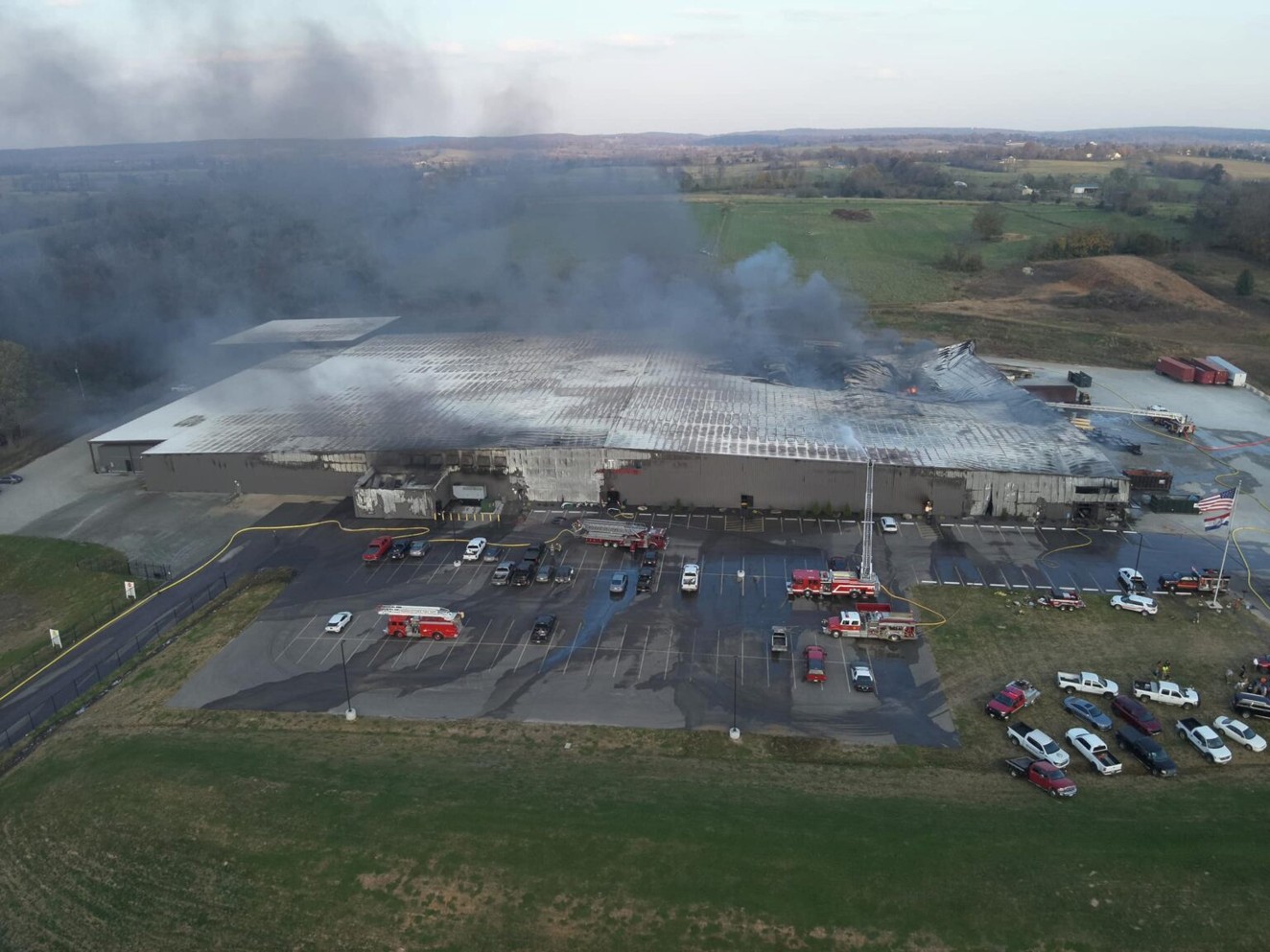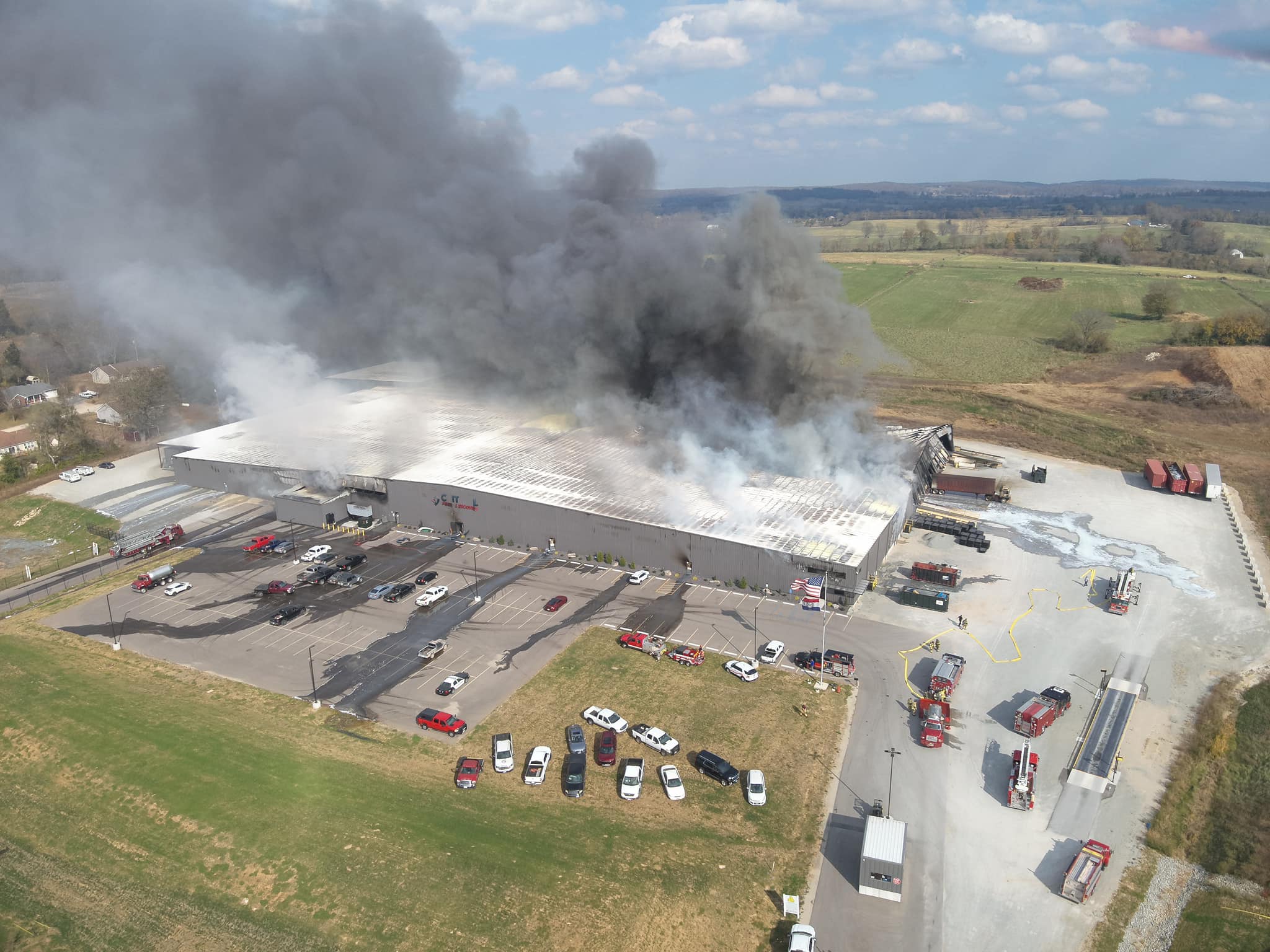FireWatch: World Updates
November 2024
The town of Fredericktown, Missouri, facility where the fire occurred is “one of the world’s largest lithium-ion battery processing facilities.” The 225,000-square-foot structure and a partially caved-in roof can be seen in the photo. Officials have not yet said what might have caused the fire or what fire protection systems were in place. But the company that operates the plant where the fire occurred, says on its website that the facility contained one of the “most sophisticated automated and remote supervised and controlled fire suppression systems in the world.”
Although the facility appears to have sustained significant damage in the blaze, there have been no reports of any deaths or injuries from the event.

Lithium-ion battery fires happen for a variety of reasons, such as physical damage from force, electrical damage from overcharging, exposure to extreme temperatures, and manufacturer defects. More specifically, lithium-ion battery fires often involve a chemical process known as thermal runaway, in which the battery essentially continuously overheats and over-pressurizes and is prone to fires, off-gassing, and sometimes explosions.
Recycling lithium-ion batteries is a complex and inherently risky process, explains NFPA® Senior Technical Services Engineer Brian O’Connor. Several factors contribute to this, including:
•Batteries arriving at facilities damaged.
•Stranded energy (residual energy).
•The recycling process involves shredding.

O’Connor says there are several steps facilities and workers can take to help them stay safer while carrying out this dangerous work.
“First and foremost,” he says, “always follow the applicable fire and life safety codes.” NFPA codes and standards such as NFPA 1, Fire Code; NFPA 101®, Life Safety Code®; NFPA 13, Standard for the Installation of Sprinkler Systems; and others could apply to the types of industrial occupancies where battery recycling might take place.
